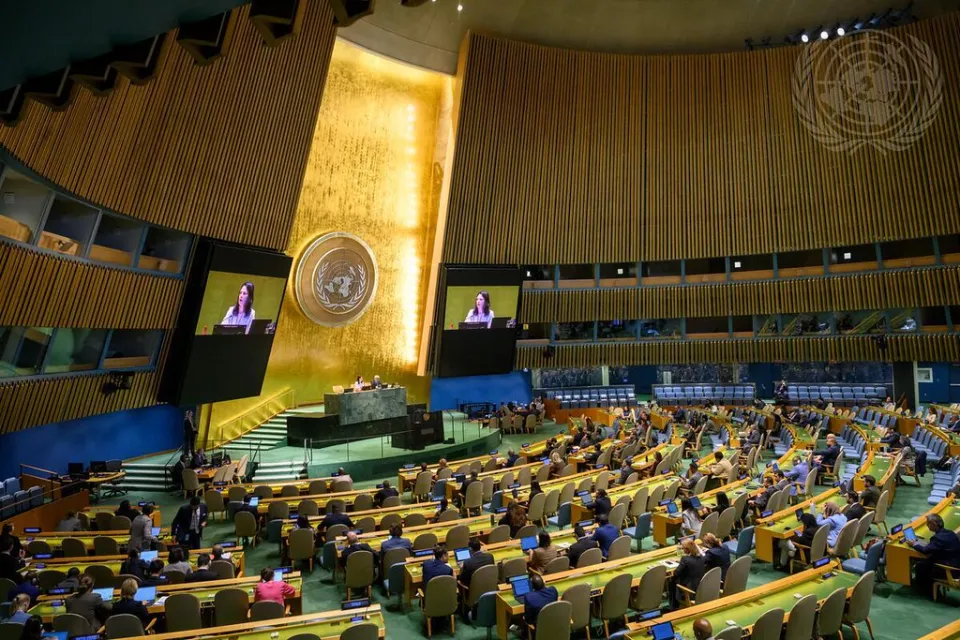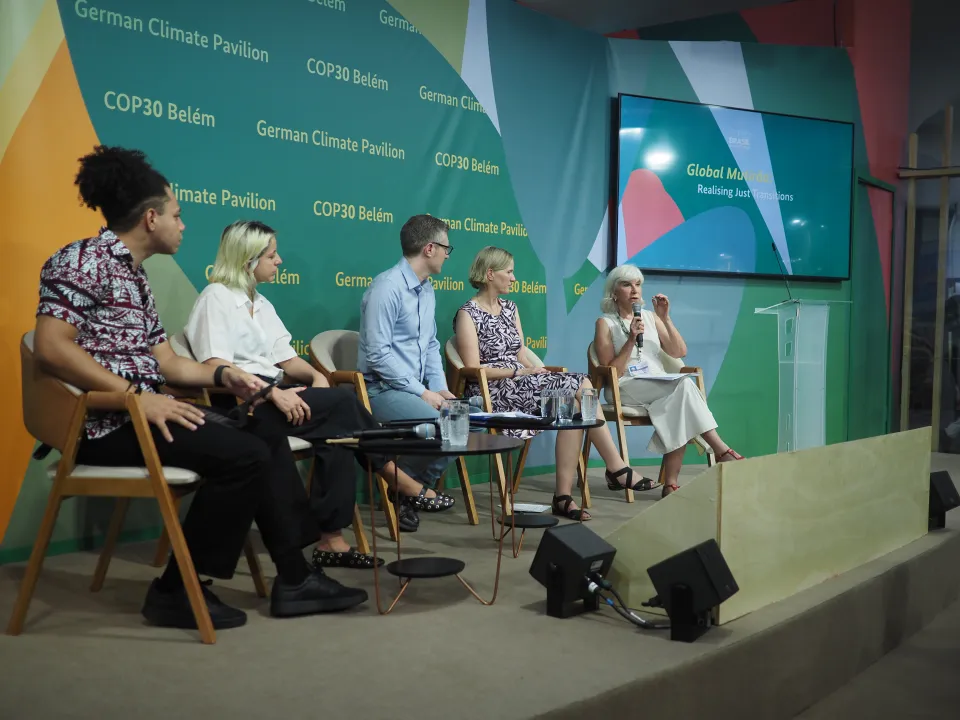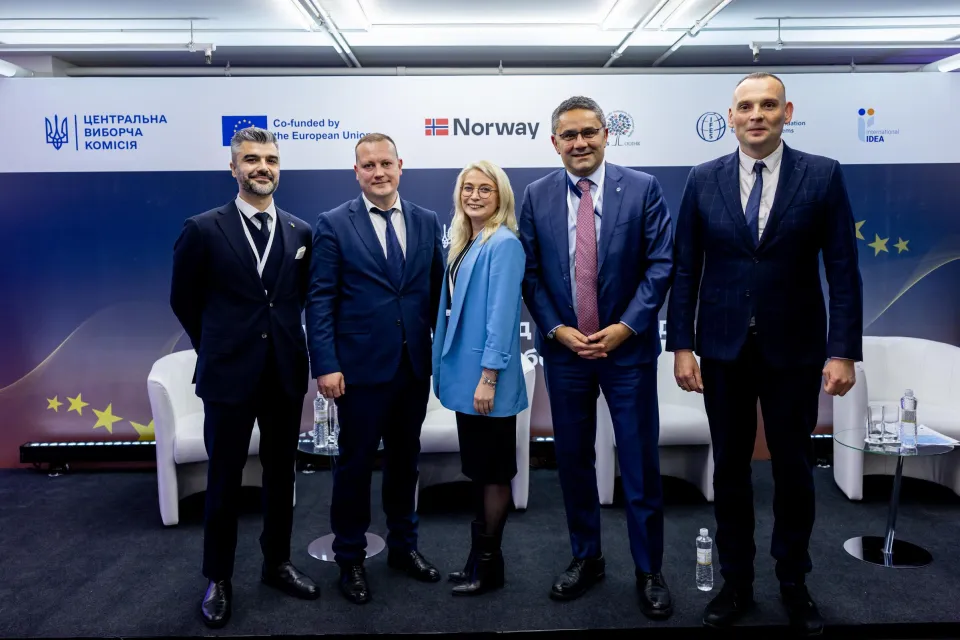The role of technology for risk management in Africa

On 1 December Africa had its own “shock election”. The incumbent president of Gambia, Yahya Jammeh, lost to the opposition candidate Adama Barrow. Just as the Trump election in the US took political analysts by surprise, it was not expected that Jammeh would have to move out of the State House after more than 20 years. Like these election results, not all events are predictable.
Do the false experts’ predictions mean that politicians should ignore their analysis? Instead, decision makers could follow their instincts and react to situations as they present themselves. However, events can escalate into a serious crisis that threatens the lives of many. People could suffer both directly from acts of violence and indirectly from repercussions of the impairment of economic activity or the destruction of infrastructure. In the face of that, crisis management should not depend on the skills and motivations of individuals alone, but should also be informed by science. Hence, the question is not whether, but how, technology can help to prevent or mitigate situations of crisis.
The Continental Early Warning System (CEWS)
The African continent has been particularly plagued by the detrimental effects of political crises. For that reason, a pro-active approach towards political instability has become one of the priorities of the African Union (AU) when it was created as the successor to the Organization of African Unity in 2002. One of the elements of the African Peace and Security Architecture (APSA) is the Continental Early Warning System (CEWS). The CEWS’ mandate is to provide a data-driven analysis of the risk of conflicts in AU member states for decision-makers.
The technology
The basic assumption of an early warning system is that it is possible to predict a country’s future from its current situation and historical events. Thus, to be able to forecast risk you need to create a baseline. According to Taye Abdulkadir, Information System Officer at the CEWS, it is necessary to gather situational dynamic data on a country for at least one year to be able to know the average level of the indicators that are monitored. Moreover, the CEWS combines the analysis of structural and dynamic data. Structural data refers to the general features of a country that only change slowly, such as demographic structure of the population or income distribution. Structural factors do not pose a risk in themselves. They are not sufficient to trigger instability, but create a conducive environment. In contrast, dynamic indicators capture events that may form part of an escalation process leading to the outbreak of a crisis. Altogether, the CEWS approach allows to track the evolution of both structural conditions and events over time.
The CEWS uses both the online resources of news media and field reports. The tool to monitor media is called Africa Media Monitor (AMM) and currently searches more than 2500 sources in Arabic, English, French, Portuguese, and Swahili. The AMM comprises of three interfaces to present and disseminate information: The Africa Brief is a news page which is updated every ten minutes highlighting the most cited topics of the moment and presenting results in clusters and categories. The CEWS staff uses the News Desk to select which information on events is important and must be brought to the attention of decision-makers via SMS, e-mail and daily news summaries. The Live Monitor visualises the location of the news events on an African map.
For field reports, the CEWS builds on AU presence in roughly 14 of its member states. The Africa Reporter is a tool that structures the reports template (incident and situation reports) in order to make sure that the data is comparable and ready for quantitative and qualitative analysis. The CEWS assigns the colleagues in the field offices with an irregular (incident) and a regular (situation) reporting task: first, they should inform about relevant incidents on the ground immediately when they occur specifying “who did what to whom how and where”. Second, they complete a weekly questionnaire that helps to track the development of the situation in the country.
To assess structural conditions in the AU member states, the CEWS draws on external data sources from governments, international organizations – like the UN or World Bank – as well as international and non-governmental organisations. The African Prospects tool taps into these sources and calculates the vulnerability of countries for instability through a regression analysis. The results lead to the production of periodical Structural Vulnerability Assessments (SVAs). The evidence-based aspect of the tool is tested through the comparison of a forecasted known data with its actual value. To get acceptable results, the SVAs should build on data of at least twenty years. When the result fails to match the situation accurately enough, the information systems officers might decide to discard indicators or countries with high missing data or may decide to add additional explanatory indicators. For instance, “South Sudan is affecting the algorithm”, says Abdulkadir, because there is no aggregated data for the country prior to 2011.
The human aspect
Despite his enthusiasm for analytic tools, Abdulkadir emphasises the importance of remembering the “human aspect” of early warning. Human qualities come in at different points: humans design the tools. This requires not only the mathematical and technical skills to master numbers and programme software. In addition, a tool designer needs knowledge about social and political processes and linguistic inventiveness. The reason is that keywords are the nets to fish the exuberant flow of news in the media for the relevant information.
Another human dimension is the production of reports from the field. The AU staff are however, often not a sufficient source of information on events because reporting is only a secondary task and the field officers cannot be everywhere to gather information on critical incidents. Therefore, the AU seeks to broaden its human resources for data collection and establish a partnership with civil-society organisations.
Finally, humans interpret data and arrive at conclusions about actions. A first analysis already takes place in the situation room: The person monitoring data sources has to decide what kind of information is critical enough to be disseminated. The CEWS’ analysts are responsible to follow the developments in their respective sub-region and write an early warning report if events foreshadow a potential crisis. As one part of the reports, the analysts construct best, worst and most likely scenarios and suggest recommendations for all of the cases.
The risks
An asset of tools for early warning is that they are customisable to the needs of the user. The AMM was developed in collaboration with the EU’s Joint Research Centre (JRC) in Italy and is inspired by the Europe Media Monitor. The Africa Reporter is also used by the IGAD’s Conflict Early Warning and Response Mechanism (CEWARN) and the ECOWAS’ Warning and Response Network (ECOWARN). However, the templates are adjusted to the organisation’s mandate. Just as the units of regional economic communities (RECs), the CEWS objective is to anticipate and potentially prevent conflict, but it faces the challenge to monitor a wide range of issues in all of the 54 AU member states.
The topics of interest that could pose a risk to stability are categorised in 19 baskets that range from agriculture to international relations. Moreover, there are types of events that generally lead to singling out a country for a closer monitoring of the situation. One of these events are elections because they may act as trigger of conflict. Thus, the continental election calendar affects the work plan of the CEWS’ analysts. The CEWS monitors elections with eight questions on risks associated with elections in its template for situational reports, such as the occurrence of electoral and campaign violence or the degree of independence of the election management body. To assess the situation on the ground, the CEWS deploys an analyst a few weeks prior to an election who produces daily updates on the course of the electoral process.
To extend the knowledge on the specific risks factors of elections, the CEWS was keen to learn from International IDEA’s expertise. On 20-21 October 2016, International IDEA provided a training for CEWS members on the electoral cycle approach and presented the Electoral Risk Management Tool (ERMTool) in Addis Ababa. Like the CEWS’ tools, the ERMTool can be adjusted to the user’s needs and allows to follow the evolution of risk parameters over time. However, it focuses more specifically on internal and external risk factors to the peaceful and effective conduct of the electoral process. On top of that, risk areas can easily be identified with the help of maps and the tool is as a “global good” at everyone’s disposal. International IDEA collaborates with another AU department, the Department of Political Affairs, to popularise the concept of electoral risk management in Africa.
The value of technology for risk management in Africa
After all, what role do tools play in the prevention and mitigation of crises in Africa? First, tools help to make sense of unstructured data. They are all the more useful, the easier they present the data, for instance with visual elements like maps, graphs or diagrams. Next, the strength of an early warning system is not to alert decision-makers about sudden events. Crucial events, such as the dismissal of Riek Machar as South-Sudan’s vice-president by Salva Kiir, quickly find their way through the media. What’s more, everyone is able to realize the severity of such cases. Instead, the value of early warning is the capacity to identify a risk environment. This means that the system is sensitive towards imperceptible signs of an impending crisis and able to anticipate crises that result from longer-term developments. Finally, early warning is only effective if the gap to response is bridged. One of the bridges that has to be crossed is the line of communication between the early warning and the decision-making body. Usually, the CEWS reports have to pass through several hierarchical layers on their way to the AU’s Peace & Security Council (PSC).
To improve this link, the format of bi-annual Horizon Scanning Briefings has been introduced where analysts directly inform the PSC members about their findings on the continent’s risk assessment. Other obstacles to a rapid response can stem from the modes of decision-making themselves. In a nutshell, Taye Abdulkadir concludes on the status of tools for risk management in Africa: “Technology is an enabler, not an end in itself.”
----
CEWS mandate & structure
The CEWS is one of the five pillars of the African Peace and Security Architecture. Its creation is based on Article 12 of the “Protocol Relating to the Establishment of the Peace and Security Council” from 2002. In December 2006, a meeting of experts developed a roadmap for the institutionalization of the CEWS, but it took six more years until it became fully operational. The CEWS’ consists of the following elements: The “Situation Room” is the observation and monitoring centre and currently staffed by ten persons working on a shift basis: three for the day shift from 8.00 – 16.00, one for the evening shift from 16.00 – 21.00 and one for the night shift from 21.00 to 8.00. The monitoring of the 54 AU member states is divided among five analysts. Two information system officers build and maintain the unit’s technical infrastructure. In addition, the collaboration with the early warning units of regional economic communities supports the data collection and analysis at the AU’s Peace & Security Department in Addis Ababa. The ‘clients’ of the CEWS products are decision-makers within the AU institutions, the Regional Economic Communities (RECs) and AU member states.




